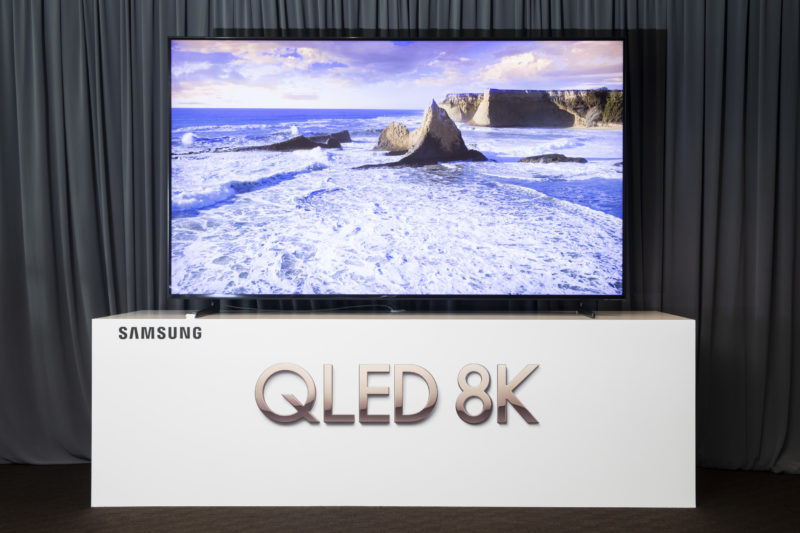
The Australian market has officially welcomed its first ever range of 8K televisions, representing a substantial leap in tech trends, with the expected price bump that comes with it. And while LG, Sony and Hisense have yet to unveil their models for this year, Samsung has gotten the jump with their new Q900 range which, like all 8K TVs, boast four times the number of pixels compared to 4K – a total of 33 million pixels.
Launched into stores around the country last week, the Q900 comes as part of Samsung’s impressive 2019 home entertainment range which includes over several new types of televisions, most sporting a number of additional design-focused features.
The most notable, aside from the 8K beasts, are the new QLED 4K TVs, defined by their implementation of Quantum Dot technology which promises to maintain colour integrity even at higher levels of brightness without looking washed out.
“Our 2019 home entertainment range has been designed for Australians who want the best combination of picture and sound quality, smart TV capabilities and design”, said Head of Consumer Electronics at Samsung Australia Jeremy Senior. “Big screen TVs have become the norm in many Australian homes and with bigger screens comes the need for clearer, more detailed pictures. We need to continue to deliver a premium picture quality to match the size of these televisions”.
The new range makes use of HDR10+ and Ultra Bright technology to help balance the TV’s contrast and colour, a feature extended to all of the new models, along with adaptive brightness which adjusts according to external lighting conditions.
Q80 and above QLED TVs come with a number of exclusive additional features, such as Samsung’s enhanced Anti-Glare technology which actively works to reduce glare even in excessively sunlit rooms. Another exclusive feature is Wide Viewing Angle technology, which introduces a new panel layer to reflect light further onwards from the ‘sweet spot’ directly in front of the TV, which in turn reduces colour shift and blooming effects to viewers at extreme angles at either side of the screen.
AI upscaling comes to define these models, making use of a database of millions of low and high-res video machine-analysed video clips to create specific algorithms used to detect and resort edges, and recreate unique textures to help reduce visible picture noise from low-res content. This is complemented by features such as Adaptive Brightness Control and Adaptive Sound to offer viewers an immersive experience. The sound feature, in particular, will be especially useful to optimise balance between music, dialogue and action, so louder parts of certain content are automatically balanced as a function of set volume.
RU8000 and above TVs will work with all the major digital assistants to enhance the smart tv experience, from Bixby and Google Assistant to Amazon Alexa and – in the second half of this year – Apple Airplay 2. This extends to Apple TV support on all 2019 Samsung Smart TV models, including all 2018 models via a firmware update coming later this year.
The issue with the 8K televisions is, of course, the content actually available to take advantage of such an ambitious resolution. There are only a handful of YouTube videos that have been filmed in 8K, in addition to this year’s Superbowl and next year’s Tokyo Olympics. Outside of forthcoming major sporting events though, it seems like 4K will still be the cap for most of the content available in the world, which is why Samsung’s complex AI upscaling will be most valuable. Whether this changes in the near-future remains to be seen, but currently streaming services such as Netflix and Amazon, aside from a few exceptions, seem to still be focusing strongly on rolling out 4K content.
For a full round-up of all the new features and models head to Samsung’s official website HERE.
